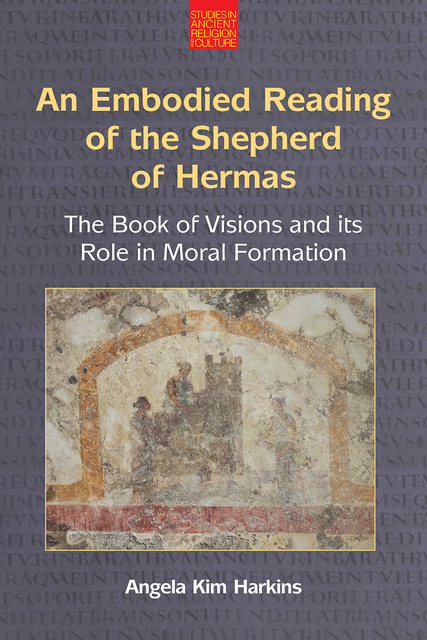Harkins/Embodied Reading, 2. Taking a Look at Hermas

Full description
Chapter Two examines references to Hermas’s proprioception and interoception in greater detail. This chapter continues to highlight how the modern reception of the Shepherd by scholars stands in contrast to the enormous popularity of the Shepherd among the literary elite in Egypt. Modern commentators routinely note the text’s monotony and repetition, with significant disdain for the unheroic character of Hermas. This chapter analyzes the proprioceptive and interoceptive cues in the text to read the Book of Visions enactively and immersively. Painstaking descriptions about Hermas’s bodily postures and movement, along with interoceptive details about his fear and anguish are often dismissed as mundane or unimportant by modern scholars who read for analysis and information; yet these are precisely the details used in enactive reading. Such details are needed to understand Hermas as a compelling character with an interior consciousness. Details about Hermas’s awareness of his embodied movement through the narrative world (proprioception) and descriptions about his awareness of interior states of emotion (fear, anguish, dread, as well as sexual arousal (interoception) are recognized from our own lived experience and associated strongly with the consciousness of real individuals. Proprioception refers to the kinesthetic details about the seer’s extended body as it moves through space. It also includes descriptions of the seer’s bodily positioning and posture. The Book of Visions also provides abundant details about the seer’s visceral interior experiences, which are known as interoception. These are associated with the bodily experiences of pain, hunger, temperature, and sexual arousal. They also include emotions of the seer that are displayed in the body. For example, the state of fear can be expressed in the body through various interoceptive experiences: weeping, blanching of the face, goosebumps, nausea, clammy hands, or the trembling of the body. Consideration of these embodied experiences can broaden our understanding of sensory perception by moving beyond the classic sensorium of the five senses: seeing, hearing, smelling, tasting, and touching. The first-person narration that is characteristic of apocalypses allows a reader to imaginatively enact Hermas’s proprioceptive and interoceptive cues and greatly assists in a reader’s ability to imagine him in a compelling way, as a person with an interior consciousness.
- typeImage
- created on
- file formatjpg
- file size460 KB
- container titleAn Embodied Reading of the Shepherd of Hermas: The Book of Visions and its Role in Moral Formation
- creatorAngela Kim Harkins
- isbn9781800503298 (eBook)
- publisherEquinox Publishing Ltd.
- publisher placeSheffield, United Kingdom
- rightsEquinox Publishing Ltd.
- series titleStudies in Ancient Religion and Culture
- doi
We use cookies to analyze our traffic. Please decide if you are willing to accept cookies from our website. You can change this setting anytime in Privacy Settings.
